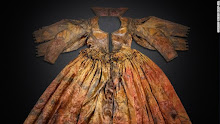In this remarkable time of feminine wisdom rising, here's an excerpt from my long-in-the-works upcoming book, The Spiritual Mission of a Princess. Like the excerpt below, each chapter begins with something from the life of Diana, Princess of Wales—a young woman of highly-developed heart energy who intrigues us still—then intertwines that legacy, seen through a more archetypal lens, with the story of all women.
.................................................................
[EXCERPT]
CHAPTER ONE: PRINCESS MISSION
Unwittingly, the Princess had established for herself a persona that would,
in time, be a phenomenon.
-Andrew Morton, Diana: Her Own Story
Or did the anti-monarchists and
second-wave feminists and other skeptics—not taken in by romance or grandeur or
even possible divine intervention—have it right? This was simply another wan
young woman, “shrouded” beyond recognition, “tumbling from her coach like a
bride in a bag,” critiqued Mantel. From feminist writer Beatrix Campbell:
“Her ivory silk wedding dress was a shroud…a crinoline, a meringue…a symbol of
sexuality and grandiosity….” Diana was being led to an altar “propping up the
aged patriarch who had got her into all of this” to stand with a man much beyond
her years and experience who represented an outdated institution where young
women disappeared into desperate disappointment. “Neither her father nor her
mother had taken care of her, enlightened her or warned her. They married her
off to someone else’s prince,” Campbell added. Professor Colleen Denney
opens her study of how artists portrayed the princess “with the consideration
that feminism and femininity collided in 1981 when Diana married.”
Clearly there
were divergent worlds colliding that day—the outdated and the shift of the ages.
After all, here we were under the influence of prophetic celestial changes, long
mapped out by wise ancients foretelling the end of “old time” and the beginning
of a new era. As the Earth was doing what it naturally, miraculously does—tilt
perfectly with an elegant wobble, and spin from equinox to equinox—its slow
rotation was in the complicated process of completing two decisive cycles,
thousands of years in the making, shifting energies and filling hearts above and
below. Some called this swirling cosmic marvel the effects of the Age of
Aquarius dawning—feminine vibrations of the Age of the Goddess that would awaken
our spirit; others reverently proclaimed the “Age of Holy Breath” ushering in a
time of enlightenment and expanding consciousness. Whether it was such heavenly
wonders at work that day on this full-of-legends Emerald Isle, or simply the
dynamic effect of two royal archetypes chosen to fulfill their soul’s mission
and now moving through their predestined paces…you could not escape the sense
that there was something mystical afoot.
If this was truly an era coming to an
end—with things tired and harsh falling away, things fresh and heart-tempered
beginning—then how perfect that it was a wedding to send up the momentous flare
seen round the world, beckoning our heart’s attention. Now under the direction
of a new pole star in the Aquarian constellation, we hoped that love would,
indeed, “steer the stars and peace would guide the planets” as we all embarked
on this auspicious yet tumultuous journey.
Did this young woman—who became a
princess on her wedding day and after a long, winding road, the ‘queen of
hearts’ upon her death—ignite a pathway for a consciousness shift of the heart?
Was this a signal for the return of a nurturing goddess spirit intended to nudge
along the occurring paradigm shift where we see a flowering of feminine strength
and influence? During a life fluctuating between tedious soap opera and
compassionate healing, how could we imagine then that Diana would be showing a
way to, in the words of spiritual thinker Xavier Le Pinon, “educate the heart”
on how to be tender, open, and immaculately loving? In all the pomp and glamour
and personal drama, it was easy to overlook her spiritual mission.
However, for
some with eyes to see, there were clues in this enchantment on that summer-lit
wedding morning on the red-carpeted steps of St. Paul’s Cathedral. There was an
exquisite bridal moment captured in a memorable and intimate zoom-lens
photograph, where Diana—veiled in what seemed to be the ancient mystery of
womanhood—paused to look back before entering the cathedral. Possibly a moment’s
hesitation before stepping toward her entrusted destiny? Perhaps it was simply
to check the fluffing of her impossibly long train, stretching down the
staircase. But then you see her eyes, piercing through the veil as if with an
inner knowing, glancing toward some distant yet remembered past encouraging her
forward. Was Diana standing in for all future brides at a time when they, too,
pause at their nuptial doorway to embody, no longer a woman’s loss of autonomy
and self-expression—as was the old custom of the patriarchy—but the female
essence and empowering qualities of beauty, openness, strength, forgiveness,
love, and the desire for true partnership? ~





















